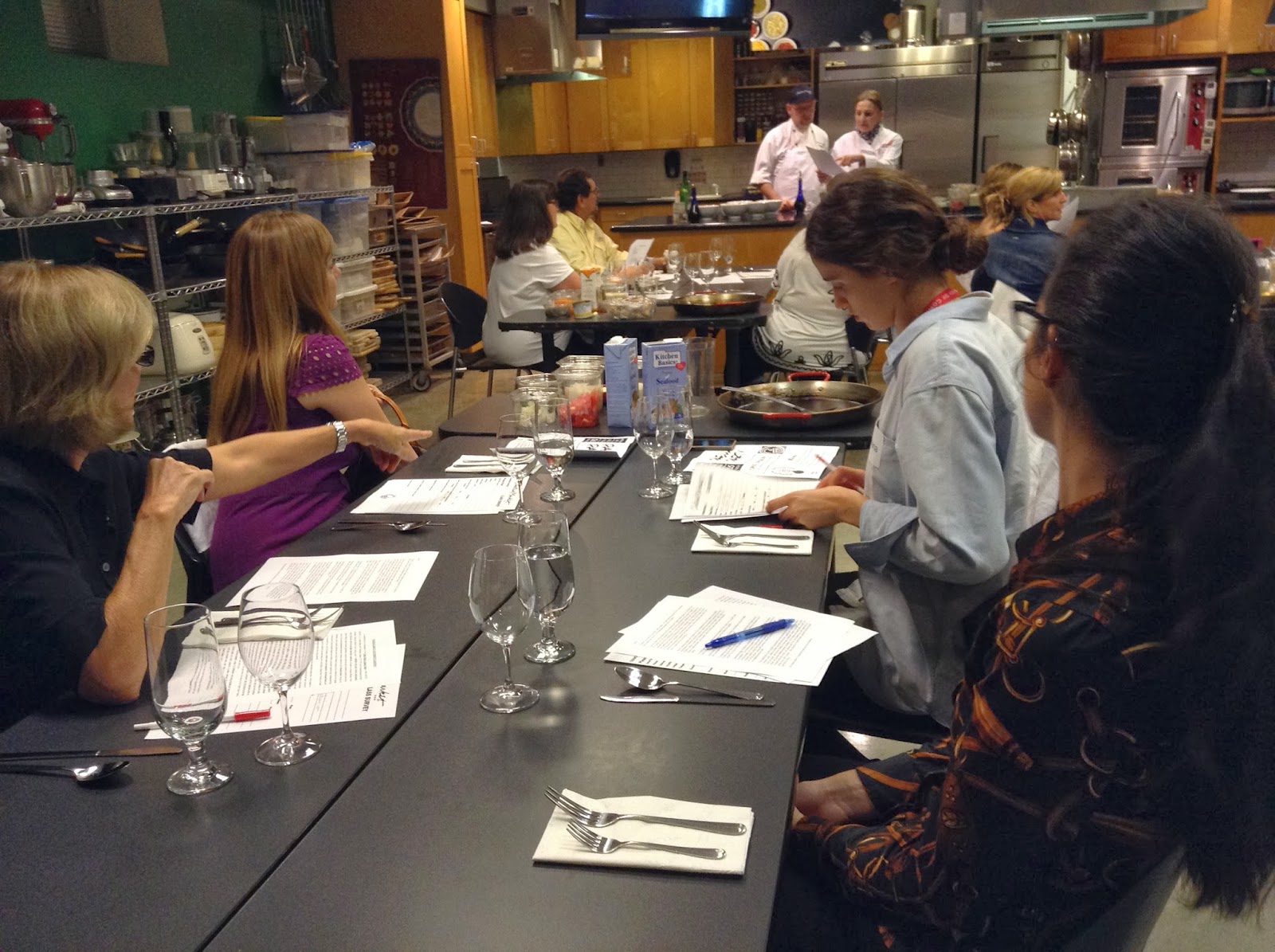Paella
"Paella" is a classic rice dish that is eaten in Spain
and is typical of the Levantine and Valencian coast, or the Mediterranean side
of Spain.
Like so many other dishes (such as Moroccan Tagine, Beef Stew,
or Chicken Pot Pie, which are all cooked in their own cooking containers) the
name “Paella” is derived form the cooking pan: a round, two-handled, shallow
pan. The reason for the paella pan being so shallow and large in diameter is to
ensure that the rice is in a single layer if possible. The paella pan is
usually made of a thin layer of iron, as this is essential to transmit the heat
uniformly, and to actually see when the rice is ready without touching it.
When cooking paella, the choice of rice is essential. For this
reason, the paella originated in Valencia, around a lagoon, where rice has been
cultivated since the Eighth Century. Over time, Paella has become one
“in-the-same” with Spain. It is Spain’s national dish, and tourists come from
far and near to have Spanish paella.
A traditional dish for Sunday lunches throughout the country, it
is usually very family-oriented (i.e. the bigger the pan the better the
paella).
Additionally, there have always existed Culinary Competitions
around Paella, with international chefs from the world around.
Something curious about Paella is that many restaurants all over
Spain serve Paella as the “Menu of the Day” every Thursday. Many different
theories try to explain the origin of this tradition.
Gastronomically, Paella is considered a 5-fork level dish.
Nutritionally, its status is excellent. The Paella is praised in the
Mediterranean diet for its grain source of carbohydrates, its variety of greens
and vegetables, and its mixture of meats (country paella) and/or fish
(fishermen’s paella) that provide a sources of protein. All of the above, along
with precious olive oil, provide the necessary components of a Mediterranean
diet.
The traditional country paella ingredients can be anything from
wild boar, chicken, pork, rabbit or snails; and the fishermen’s paella can
contain ingredients such as squid, with its ink, Nettles of the sea,
cuttlefish, clams, mussels, and crab claws, all typically Mediterranean
shellfish. All of these are based with a broth, be it meat broth fish broth,
and always with rice, be it black rice, with squid ink; or yellow rice, with
“azafran,” the stamen of a wild flower typically found in Spain and North
Africa.
The steps taken to cook the Paella are the following:
First, you fry the rice in the sauce. Then you add the broth and
keep an eye on it until the broth does down.
There are many different ways of serving Paella.
A)
Paella a Banda, in which all additions to the rice are served
separately.
B)
Blind Paella, where all additions to the rice are chopped up,
shelled, di-boned, chopped in bite-size pieces and “Eaten Blindly.”
C)
Brutt Paella, whereby one shells, debones, cuts, cleans and
slices meats and shellfish “Brutally.”
All the while, savoring the Rice Dish is “each to its own!”
There are several common steps in the preparation of any kind of
Paella:
First is the sauce.
One can make the sauce by slowly simmering olive oil, onions, garlic and
tomatoes; and adding vegetables such as beans, green and red peppers and dried
peppers. This process requires patience and time, since one must cook the
vegetables without over cooking them nor drying them out.
Another key element is the stock
or broth. It must be of good, pure quality. You should consider cooking
more than the amount required, since you can always freeze the unused broth and
save it for future use. The Broth should be boiling while you prepare the rice,
as it must be poured boiling as to not stop cooking anytime.
Another essential step is the Sautée Rice. Sautée the rice in the Paella pan with the prepared
sauce and then add the Broth or Fish Stock. The rice will change from opaque
white to a pearl-like transparency.
Let it all cook for about 18 minutes in total: 8 minutes on high
heat, 6 to 7 minutes on low heat, and the last 3 or 4 minutes over low heat if
the broth has evaporated or over maximum heat if there is still some broth left
in the pan.
As a final step, you might add some of the pre-cooked additions
on top of the rice and make a design.
Always let it stand for a few minutes before serving.
Following these basic steps as a guide, anyone can make a paella
and customize it to different tastes and seasons.






No hay comentarios:
Publicar un comentario